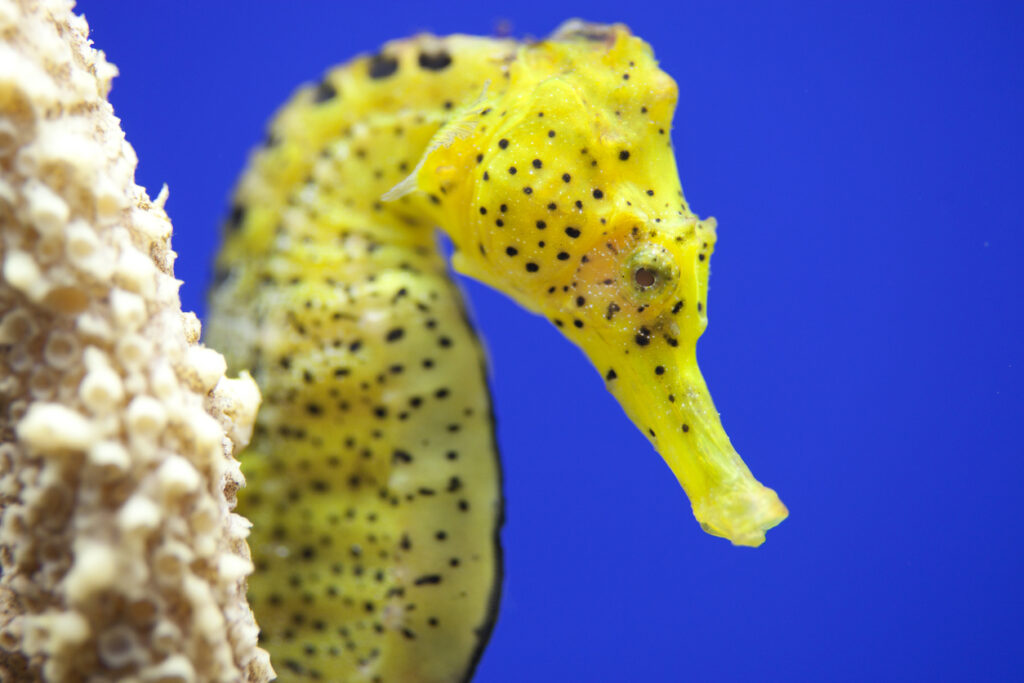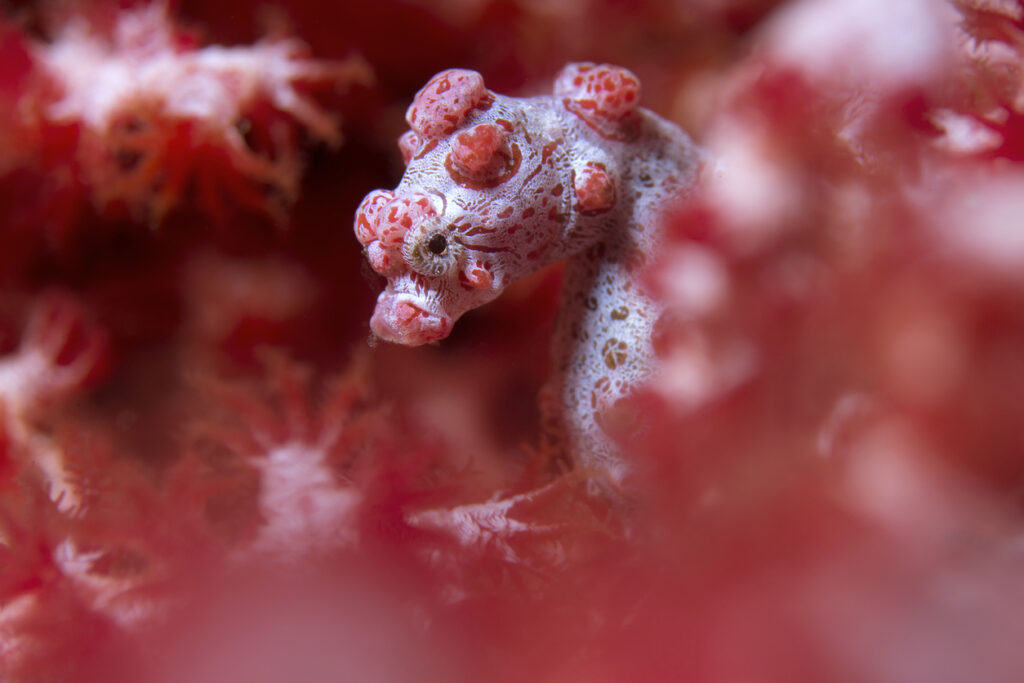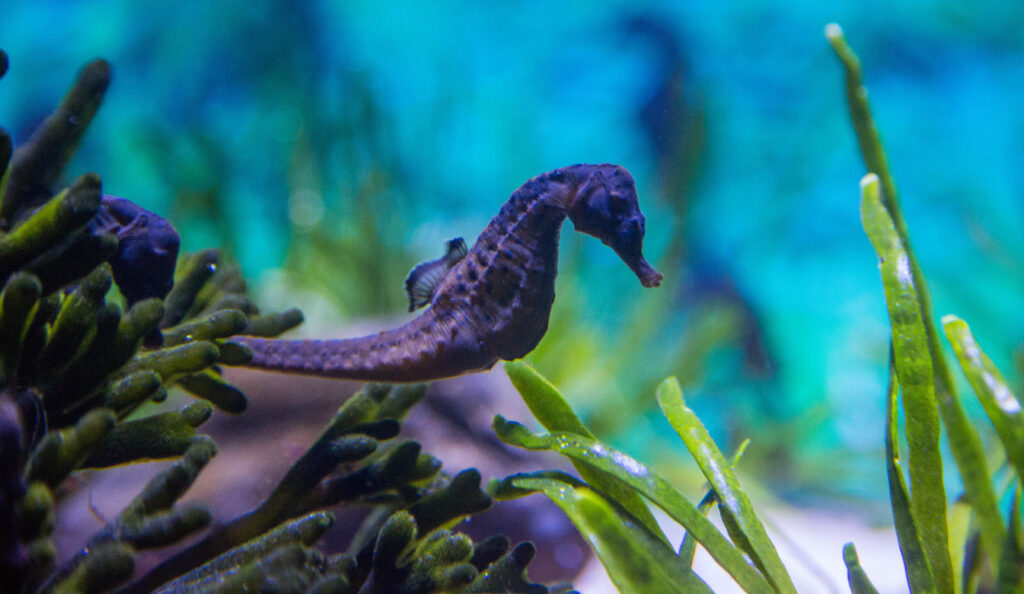Aside from the fact that they’re kind of adorable, how much do you really know about seahorses (Hippocampus)? Did you know, for instance, that they don’t have stomachs? Or that they’re infamously awful at swimming? And were you aware that there are 47 distinct species of seahorses, of which 14 were discovered in the last decade alone?
See – there’s a lot more to these cute marine critters than meets the eye! That’s why, in today’s post, we’re taking a closer look at some of the main types of seahorses to discover how they differ and where you’re likely to find them in our seas and oceans.
So, without further ado, let’s dive in.
How many types of seahorses are there?
As touched on in our introduction, there are a lot more individual types of seahorses than people realise, with the latest official count coming in at 47. And since they’re notoriously difficult to differentiate due to their incredible camouflaging abilities, there may be others out there that biologists simply haven’t discovered yet.

Indeed, many marine experts believe that there could be as many as 200 seahorse species in our oceans, but because they’re so tricky to identify, we’ll never truly know the real number. That’s quite a magical possibility in and of itself, and part of the reason why these unique animals attract such fascination and interest.
Introducing some of the most common varieties of seahorses
It would take an awfully long time to walk you through every type of seahorse, so we’ve handpicked a few of our favourites to give you a flavour of just how diverse this genus of marine animals really is.
Big-bellied seahorse (Hippocampus abdominalis)

The big-bellied seahorse is one of the largest seahorse species in the world, with adults growing up to 35cm. These beautiful creatures are native to the seagrasses and reefs of Australia and New Zealand, where they use their powerful tails to cling to nearby objects, enabling them to live comfortably in strong currents.
As their name suggests, big-bellied seahorses have one defining feature: a protruding pot belly. This gives them the appearance of being perpetually pregnant, which they’re not. When they are, however, it’s the males that carry the young – a fact that’s true of all seahorse species.
Interested in catching a glimpse of these big-bellied little fellas for yourself? You’ll find them on display in the Nursery exhibit right here at Hastings Aquarium.
Pygmy seahorse (Hippocampus bargibanti)

Yep, you guessed it: pygmy seahorses are named thus because they’re one of the smallest types of seahorses in our seas and oceans. There are several seahorses within the pygmy genus, with most animals within the class growing to just 2cm – around fifteen times smaller than their big-bellied counterparts.
Such are the physical differences between big-bellied and pygmy seahorses that it’s hard to fathom that they’re the same species; you’ll just have to believe us! One thing that is for certain is that, owing to their incredibly small size and incredible camouflage, pygmy seahorses are almost impossible to spot unless you really know what you’re looking for.
Knysna seahorse (Hippocampus capensis)

One of the rarest and most beautiful seahorse species has to be the Knysna. Endemic to the brackish-water estuaries of South Africa, specifically Knysna Lagoon and the Keurbooms River, these mid-sized seahorses grow to an average of 12cm and range in colour from pale green to purple-black depending on the environment and the water conditions. Despite its relatively small size, the Knysna has a strong tail that acts as an anchor against the powerful, fast-flowing river currents in which the fish spends its life.
Sadly, the Knysna seahorse is in rapid decline and was recently added to the IUCN’s Endangered Species List; habitat loss and pollution are blamed for a huge drop in the fish’s numbers in recent years. As such, breeding programmes at aquariums all across the globe are now considered key to the survival of this rare and precious marine creature.
Three Fascinating Facts About Seahorses You Should Know
Keen to learn more about these cute-as-a-button ponies of the sea? Here’s our pick of fascinating facts about the beloved seahorse.

- Seahorses prefer long-term relationships. Mating pairs tend to couple up for multiple seasons and may even stay together their entire lives. And to make sure they don’t get swept apart, they often link tails to hold on tight to one another. Aww!
- Seahorses eat up to 30 times a day. Yep – they may be small, but seahorses have ferocious appetites, eating almost constantly throughout the day. That’s down to the speed at which they process their food.
- Seahorses are found in almost every ocean on Earth. That’s right, barring the Southern Ocean (which is just way too cold), seahorses sure get around. They’ve adapted to live in temperate and tropical waters from Australia to Argentina, which is pretty impressive when you consider that they can barely swim.
We hope you’ve enjoyed this deep dive into the wonderful world of seahorses. If you’d like to encounter some of these precious marine critters for yourself, come on down to Hastings Aquarium. Tickets are available via our online booking portal.
